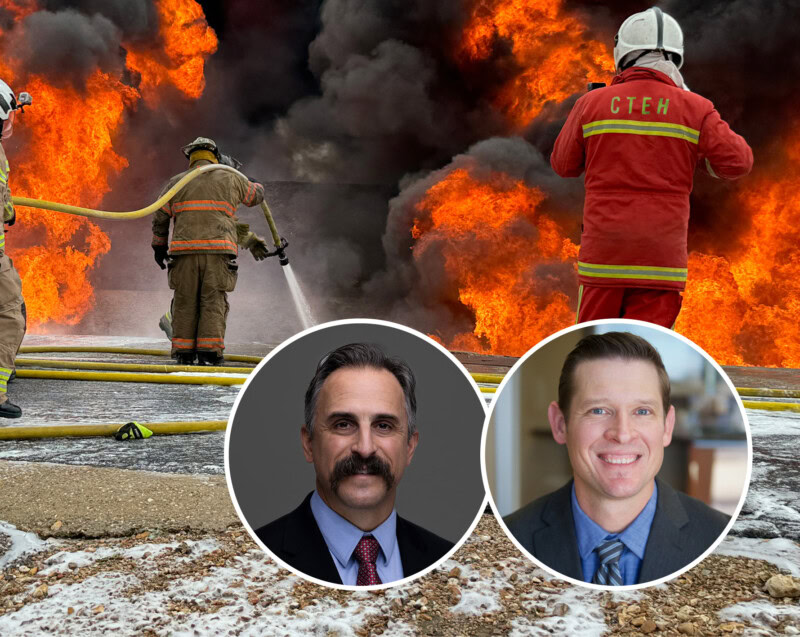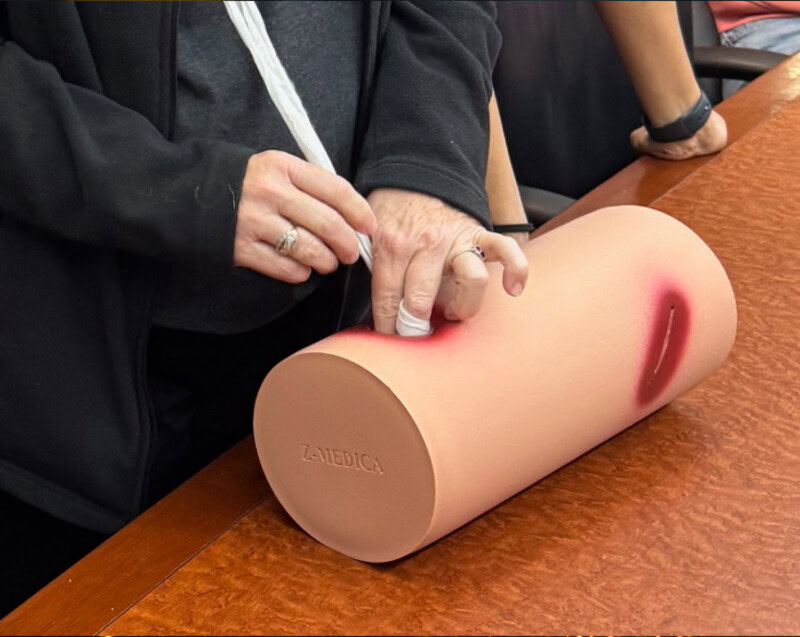A train has derailed somewhere on the other side of the country and chemicals may have been released. The staff at CTEH gets the call to respond. What happens next?
CTEH’s environmental emergency response capabilitiesare well known throughout the industry and one of our most important service offerings is “24-hour, 365-day availability of qualified, experienced, respected, and well-equipped personnel.” Living up to this promise requires the right staff, organization and, most importantly, a plan.
Jeffrey Lewellin, director of CTEH’s Toxicology Emergency Response Program (TERP©), says that CTEH has the process down to, well…a science. He lays out the basic steps that take place when an emergency call comes in:
- Information Download – Lewellin explains that CTEH has instituted a practice known as “SERT” (Senior Emergency Response Team) calls. When an emergency call comes in, the Project Technical Director (PTD) utilizes a special service to automatically calls 30+/- key response team members. Everyone is brought up-to-speed by the PTD, who describes the details of the incident based on the information provided. “This is where we determine the most significant challenge at an incident site. For example, figuring out exactly what happened in a derailment is a challenge – first responders must try to determine what cars were involved, what each one contained and the level of damage to each car,” says Lewellin. “We’ve been to more than 1,200 incidents, so we can quickly determine what to look for and what information we need to gather once we arrive.”
- Mobilization/Deployment – This begins with the team arriving at the CTEH offices to pull necessary equipment and supplies off the shelf. “Our supplies and equipment are organized and ready to go at all times,” says Lewellin. “We can pull the right testing equipment for the specific job if we know the chemicals involved. If not, we have a ‘decision tree’ for determining what to bring. If need be, we can bring a full suite of GASTEC detector tubes and other instruments that give us the ability to examine hundreds of different chemicals.” Once the necessary equipment has been packed, the team proceeds to the appropriate transportation to the event. CTEH has equipped vans for road response, but the company also owns a plane that can be utilized for trips within the country east of Colorado. “If we need to go farther west, we may charter a jet from Memphis. Western Canada, for instance, may require charter,” says Lewellin.
- Site Arrival – This begins a new phase of preparation for on-site information gathering. “We calibrate our instruments, turn on the equipment and establish our communications network,” says Lewellin. “Then we interact with the unified command group, clients and other officials involved. This process defines our work on the project and allows for the completion of written plans – health and safety plan, air sampling plan and so forth – that will define how the CTEH team will conduct our work safely and efficiently. These are considered a “living” document that will evolve as more is learned.
- Sampling/Data Gathering – Once plans are in place and the incident command has assigned duties, CTEH sets up a web portal to collect and share data as it is being gathered by mobile devices. Teams then don appropriate protective gear and head to the incident site. “Our teams make instrument readings and visual examinations of the site. They sync the data they gather in real time to servers and to a website accessible to stakeholders. We really let everyone “see” what’s happening as it happens,” explains Lewellin. These data help inform decisions relating to health and safety of response workers and the general community.
- Mitigation – Lewellin describes this as the point during which other members of the incident response team take actions to bring the event to a close. For example, this phase would involve attempts to “patch leaks or cover them in some way.” If it were a train derailment, this is the point where responders would determine how to “wreck” the site – pulling apart and removing derailed cars and begin cleaning up spilled chemicals with giant vacuum trucks or other heavy machinery. “This is when the CTEH team begins environmental sampling – water and soil,” he says. “We move toward remediation of the site and continue the evaluation of worker exposure and protection for individuals involved in the mitigation activities.”
- Remediation – This final phase is when responders begin to remove contaminated soils and debris and to achieve regulatory cleanup standards . It’s also the time when disturbing these materials can release vapors or reignite fires. The CTEH team must stay around to monitor and protect against such occurrences and to ensure that the cleanup process is successful. “There’s usually an ongoing component of community monitoring,” says Lewellin. “We may shrink the area where this is done based on our results, but monitoring will generally continue for certain areas for some time, as long as chemicals or contaminated materials are being handled at the incident site.”
Lewellin adds that there are other key components to an emergency response that occur throughout the six main phases. For example…
- “Determination of the need for evacuation will be necessary, but this can happen before we arrive. The local incident commander – usually a fire chief – uses the Department of Transportation’s Emergency Response Guidebook, which provides key guidance on chemicals and protective measures based on circumstances, time of occurrence and other factors.”
- Community outreach and media communication begins early, usually during the initial sampling phase. “We may use graphics to provide understandable results of tests.”
- Standing down of an evacuation, if one has been put in place. “CTEH’s data are key to making these types of decisions, and we often play a role in performing home and business testing as members of the community return to their homes.”




